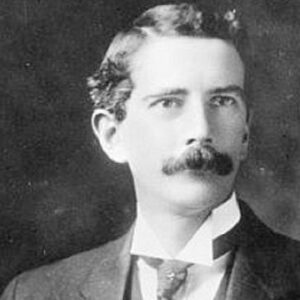Charles Greeley Abbot was an astrophysicist from the United States who was most recognized for his work in the subject of solar energy. His talent was clear from an early age; he built and invented a forge to repair equipment, a water wheel to power a saw, and a bicycle, among other things. He was hired as an assistant by the famed physicist Samuel Langley at the Smithsonian Astrophysical Observatory after completing his education. He began his research on solar radiations under his supervision and gradually developed the now-recognized value of the solar constant. Over the course of his career, he rose from being director of the Smithsonian Astrophysical Observatory to becoming Assistant Secretary, and then Secretary of the Smithsonian Institution. As a visual aid for his lectures, he focused on the impact of solar activity on terrestrial weather patterns and created some of the first solar-powered heaters and cookers. He was the fifth Secretary of the Smithsonian Institution, and the first to leave the position after a long and successful tenure. As an astrophysicist, he worked on a long-term research to prove that the Sun’s energy output changes and has a demonstrable impact on the Earth’s weather. Among his many achievements, the most well-known is without a doubt his research on the solar constant, which led to the invention of various patented solar energy gadgets.
Childhood and Adolescence
He was born in Wilton, New Hampshire, on May 31, 1872, to Harris Abbot, a farmer, and Caroline Ann Greeley Abbot, his wife.
With an older brother, Stanley Harris Abbot, and two older sisters, Ella Caroline Abbot and Florence Hale Abbot, he was the youngest child in his family.
He was a gifted inventor as a child, and his creations demonstrated his abilities. He created a forge for repairing tools, as well as a water wheel to power a saw and a bicycle.
He went to a number of public schools before enrolling at the ‘Phillips Andover Academy.’ He dropped out of school when he was 13 to become a carpenter, but he eventually returned to finish high school, which he accomplished in 1890.
Then he went to Massachusetts Institute of Technology to study chemical engineering, but he changed his major to physics after developing an interest in it. In 1895, he earned his M.Sc. in Physics.
Career of Charles Greeley Abbot
In 1895, he began working at the Smithsonian Astrophysical Observatory in Cambridge as an assistant to Samuel P. Langley, a well-known physicist and inventor.
After Langley moved his focus from solar radiations to aeronautics, he became a researcher on solar radiations. He joined Langley on journeys to observe solar eclipses in North Carolina and Sumatra.
During his trips to Algeria, Egypt, South Africa, Australia, and other nations, he earned a reputation as a good observer and pleased many astronomers.
After Langley’s death in 1906, he was named acting director of the Smithsonian Astrophysical Observatory (SAO), and the following year, he was named Director of the SAO, a position he held for over four decades.
He was appointed Assistant Secretary of the Smithsonian Institution in 1918 and was responsible for the smooth operation of the Smithsonian Institution Libraries, the International Exchange Service, and the SAO.
Along with his position as director of SAO, he was appointed Secretary of the Smithsonian Institution in 1928. He participated in Smithsonian fundraising activities and handled the institution’s participation in ‘Works Progress Administration’ programs as a Secretary.
He founded the Radiation Biology Laboratory in 1929 to assist research into the impact of radiation on plants and other creatures.
Later in his research career, he shifted his attention to the use of solar energy. He invented the solar cooker, the solar boiler, and had 15 additional patents related to solar energy as a proponent of harvesting solar energy for diverse applications.
In 1944, he left his positions as Secretary of the Smithsonian Institution and Director of the Smithsonian Astrophysical Observatory. He was given Secretary Emeritus status, and even after retirement, he continued to work on solar energy research.
Major Projects of Charles Greeley Abbot
His effort to establish the approximate value of the solar constant, a measure of the total solar radiation energy absorbed by the Earth over a particular area and time, is one of his most significant works.
He also created solar heaters and cookers to demonstrate the usefulness of solar energy in talks and demonstrations. In today’s world, his significant work on solar power forms the foundation for a wide range of appliances that use solar energy as their power source.
Achievements & Awards
The United States National Academy of Sciences awarded him the ‘Henry Draper Medal’ in 1910 for his ‘investigations in astronomical physics.’
The American Academy of Arts and Sciences honored him with the prestigious ‘Rumford Prize,’ one of the country’s oldest scientific accolades, in 1915.
Personal History and Legacy
He married Lillian Elvira Moore in 1897. After 46 years of marriage, she died in 1944. They didn’t have any children.
He married Virginia Andes Johnston in 1954. They didn’t have any children, either.
He died on December 17, 1973, at the age of 101, in Riverdale, Maryland, United States.
The American Solar Energy Society gives out the ‘Abbot Award’ every year for “outstanding contributions to solar energy research.”
Estimated Net Worth
The estimated net worth of Charles Greeley Abbot is unknown.


